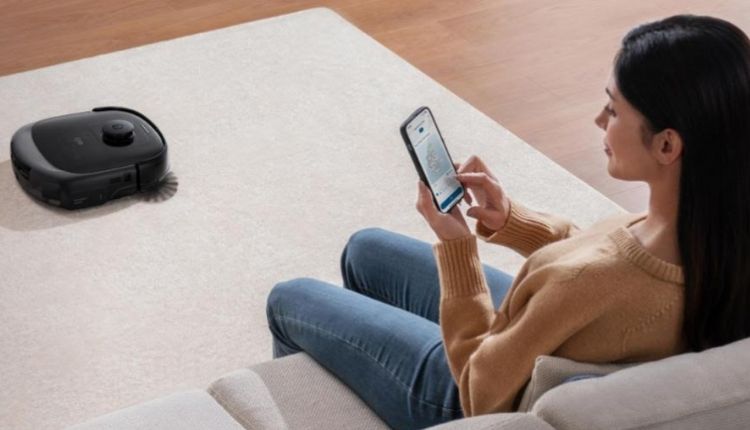Cleaning devices may seem like they should take care of themselves, but in reality, they need care, too. A robot vacuum works tirelessly to pick up dust, pet hair, and crumbs, and while it may look effortless, small issues can build up over time if maintenance is neglected. Just like any household appliance, consistent upkeep ensures reliability and prevents unexpected breakdowns. Ignoring small cleaning tasks can reduce suction power, cause navigation errors, or even shorten the life of the device. In this article, we will walk through practical daily, weekly, and seasonal steps to maximize the performance and lifespan of your robot vacuum.
Daily and Weekly Cleaning Tasks
Empty the Dustbin After Every Use
The dustbin is the heart of your robot vacuum’s cleaning cycle, and it fills quickly even in tidy homes. Emptying it after each cleaning session prevents dirt from compacting and ensures maximum suction power for the next run. Many households notice that when the dustbin is left half-full, the vacuum begins to miss small particles or struggles with carpets. Regularly checking and emptying the dustbin only takes a minute but can make a noticeable difference in performance. For families with pets or children, this step becomes even more important, as fur and food crumbs build up quickly. By developing the habit of clearing the dustbin after every use, you keep the vacuum operating at its best without interruption.
Clean the Main Brushes and Extract Debris
The main brushes do the heavy lifting by agitating and lifting dirt into the vacuum’s suction path. Over time, these brushes collect hair, threads, and fibers that wrap tightly and restrict movement. If you’ve ever noticed your robot vacuum leaving behind streaks of dirt or becoming noisier, tangled brushes are often the culprit. Cleaning them once or twice a week helps maintain efficiency. Use the included cleaning tool or a simple pair of scissors to cut away hair wrapped around the bristles. Make sure to also remove debris from the brush ends, where dust can accumulate unnoticed. This small effort keeps the brushes rotating freely and extends their life span, saving you the cost of early replacement.
Monthly and Seasonal Deep Cleaning
Check and Replace the Side Brush
The side brush is crucial for sweeping dirt from edges and corners into the vacuum’s cleaning path. Over weeks of use, the bristles bend, wear down, or even snap off, which reduces coverage. Inspecting the side brush every month ensures it stays effective. If it looks bent out of shape, soaking it in warm water can sometimes restore its form temporarily. However, when the bristles look frayed or fail to pick up debris, it’s time for a replacement. Replacement is simple, usually involving a single screw, and it restores the vacuum’s ability to reach tight spaces. A fresh side brush makes a big difference in keeping baseboards and corners clean.
Clean Sensors and Charging Contacts
Sensors are the eyes of your robot vacuum, helping it avoid obstacles, stairs, and furniture. Over time, dust and smudges can cloud these sensors, leading to navigation issues like bumping into walls or missing spots. Wiping them gently with a microfiber cloth once a month keeps them clear and accurate. Charging contacts also deserve attention, as dirt or oxidation can prevent the vacuum from charging properly. If you’ve ever noticed your robot failing to dock or taking longer to recharge, dirty contacts may be the reason. A quick clean with a dry cloth or cotton swab keeps the connection strong. Seasonal deep cleaning of these small components ensures your vacuum continues to run smoothly without interruption.
Key Parts Replacement Schedule and Tips
Every robot vacuum has parts designed to wear out gradually, such as filters, brushes, and batteries. Filters, for example, should typically be replaced every two to three months depending on usage. If you notice dust escaping from the exhaust or more sneezing in your household, it may be time for a change. Main brushes usually last six months to a year, but checking them regularly for wear is key. Batteries, while longer lasting, eventually show reduced run times and should be replaced when the vacuum cannot cover your usual cleaning area on a full charge. Planning ahead with a small supply of replacement parts saves time and frustration. Following a replacement schedule ensures your robot vacuum delivers consistent performance without surprise interruptions.
Troubleshooting Common Performance Issues
Even with careful maintenance, occasional problems can arise. If your robot vacuum suddenly loses suction, start by checking the dustbin, filters, and air pathways for blockages. Strange noises often point to tangled brushes or debris caught in the wheels. When the vacuum seems lost or circles repeatedly, dirty sensors may be the issue, and a simple wipe can fix the problem. Sometimes, the vacuum may refuse to charge or dock properly, which often traces back to dirty charging contacts or a loose power connection. For more persistent problems, resetting the device or updating its software may help restore normal function. By addressing small issues patiently, you can often avoid the inconvenience and cost of professional repair.
Conclusion
Maintaining your robot vacuum is simple. From emptying the dustbin daily to checking brushes and sensors regularly, each step contributes to keeping your device efficient and reliable. Over time, these habits not only extend the lifespan of the vacuum but also ensure that your home stays consistently clean with minimal effort on your part. And when it comes to investing in arobot hoover, choosing a trusted brand is essential. Opting for a reputable name like eufy provides peace of mind, as you can select from a wide range of models that suit different household needs, all backed by reliable quality. With a little attention and the right choice of brand, your robot vacuum can deliver long-term convenience and spotless floors for years to come.






